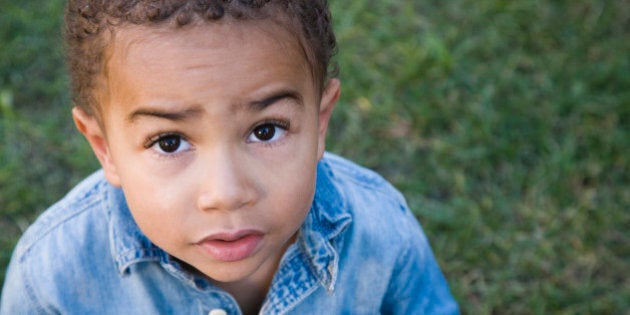
Almost all children feel stress at some point, with the Canadian Mental Health Association citing that up to 90 per cent of illnesses in children have a stress-related component.
Like adults, many children might show stress through changes in their behaviour, such as through tantrums, often due to the inability to cope with multiple stressors such as lack of sleep, hunger, or multiple setbacks in a day.
Signs of stress in preschoolers include:
-physical symptoms: headaches and tummy aches are most common
-trouble sleeping or eating
-low energy and/or mood
-seeming withdrawn
-distractibility or impulsiveness
-clinginess
-higher frequency of nervous habits such as thumb-sucking or nail biting
An integrative approach to stress management hones in on restoring stability to a preschoolers' life, providing comfort and helping a child comfort themselves. The ability to self-regulate, when learned at an early age, can have profound impacts throughout their life. Stress management techniques are different for every child, and as I discuss in my new children's book "What's Wrong with Sunny," they may include the following:
1. Movement And Exercise
Research on the positive effects of exercise on childhood stress garnered lots of discussion a few years ago after a study found lower cortisol levels among those who were physically active (compared to those who were not), during a psychosocial stress testing. Movement is also important in general -- even if not exercise per se; dancing; not being sedentary. Regular exercise, and movement in general can help build resilience to stress.
2. Mind-Body Connection
We are learning more and more each day about the mind-body connection, and the experience of stress is just one aspect that can be handled through mind-body techniques such as a relaxation technique (eg. deep breathing) or a more formal activity such as mindfulness. Mindfulness in particular has strong evidence for everything from chronic disease to mental health issues such as anxiety and depression, and can be used to bolster a child's capacity to handle stress. And here are some ways to incorporate mindfulness techniques into a child's day.
3. Nutrition
The link between poor nutrition and poor physical and mental health is clear. In particular, refined foods -- higher on the glycemic index, has been linked to sugar crash, poor concentration, and mood difficulties. These foods may be seen as "comfort foods," with consumption linked to a feedback loop to inhibit stress response. Eating more plant-based foods, and those lower on the glycemic index (some suggestions here) is recommended. Mindful eating might be helpful as well as advocating for healthy eating at school.
4. Sleep
All of us can use more sleep, and the recent release of the updated AAP guidelines for sleep in children reaffirms this is true for children as well. Poor sleep can be linked to behavioural issues in school, and likely a lower capacity to handle stress. Restorative sleep, which for preschoolers occurs with a minimum of 10-13 hours for 3-5 year olds and 11-16 hours for 1-2 year olds, helps children recharge for the day and become more resilient to ongoing stressors at home or school. Setting a consistent sleep routine is key as well: for example incorporating relaxation methods such as a warm bath, reading a book, or a mindfulness practice, are some suggestions to help a child get ready for sleep.
5. Physical environment
Ensuring the physical environment is stable -- changes such as moving; construction; excessive noise or change in routine (e.g. when relatives come to stay) can all affect ones ability to deal with stress.
6. Relationships
Strengthening relationships with caregivers and social support (other children) is important. As I discuss in my picture book, it is important for children to know that stress is normal, and that they have the capacity to self-regulate and drawn on multiple techniques to help them handle stress. Encouraging open communication with a trusted adult (caregiver, doctor, or teacher for instance) about stress and ways to handle it is key, and this can become even more important when the stress deals with issue such as bullying or harassment.
7. Nature
As Richard Louv discusses in Last Child in the Woods: Saving Our Children from Nature-Deficit Disorder nature can have profound healing qualities and foster healthy development. This rise in "nature deficit" -- primarily due to increased sedentary behavior and screen time -- can affect attention, mood, depression. Listening to a bubbling stream, hiking, taking a walk after dinner etc are just a few ways to incorporate nature into a child's day and allow them to become more present regardless of the stressors they face.
Follow HuffPost Canada Blogs on Facebook